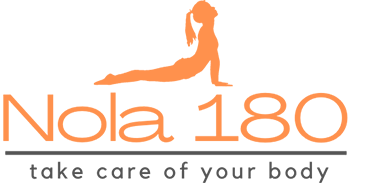Finding the right workout routine can greatly enhance a man’s fitness journey and overall health. The best workouts for men typically include a mix of strength training, cardiovascular exercises, and flexibility work. These elements not only build muscle but also improve endurance and joint health, which are essential for daily activities and long-term well-being.
Incorporating a variety of exercises can keep routines engaging and effective. From high-intensity interval training (HIIT) to traditional weightlifting, each workout style offers unique benefits that cater to different fitness levels and goals. Emphasising consistency and progression in these workouts is crucial for achieving the desired results.
Men looking to elevate their fitness can benefit from tailored workout plans that address their specific needs. This approach not only maximises efficiency but also helps prevent injuries, ensuring that men remain active and healthy throughout their lives.
Establishing Your Workout Foundation
Building a solid foundation for any workout plan is essential for achieving long-term fitness goals. Understanding muscle groups, incorporating proper nutrition, and developing a consistent routine will set the stage for success.
Understanding Muscle Groups and Compound Exercises
Knowledge of muscle groups is crucial for effective training. Major muscle groups include the chest, back, legs, shoulders, and core. A balanced workout targets all these areas, promoting symmetry and reducing injury risk.
Compound exercises are particularly beneficial as they recruit multiple muscle groups simultaneously. This not only builds strength but also improves functional fitness.
Key compound exercises include:
- Squats: Primarily target the quadriceps, hamstrings, and glutes.
- Deadlifts: Engage the back, legs, and core.
- Bench Press: Focuses on the chest, shoulders, and triceps.
- Lunges: Work on legs and core stability.
Incorporating these movements into a workout plan enhances muscle growth and strength.
The Importance of Nutrition and Recovery
Nutrition plays a vital role in a workout regimen. A balanced diet fuels the body, aids recovery, and promotes muscle growth.
Key components include:
- Protein: Essential for muscle repair. Incorporating protein shakes post-workout may support recovery.
- Carbohydrates: Provide energy for intense training sessions.
- Healthy Fats: Support hormone production and overall health.
Equally important is recovery. Sufficient rest allows muscles to repair and grow. Implementing rest days and proper sleep strategies can enhance performance and prevent burnout.
Developing a Sustainable Training Routine
A sustainable training routine is vital to success. It helps enforce consistency and builds a fitness habit.
He can choose from various plans such as:
- 3-day full body workout: Balances intensity with recovery.
- Push/Pull/Legs routine: Allows focused muscle group training while ensuring rest.
- Upper/Lower muscle-building split: Targets specific areas effectively over a week.
Training frequency should reflect his current fitness level and goals. Monitoring progress and adjusting the routine accordingly ensures continual improvement and keeps motivation high.
Exercise Selection for Optimal Results
Choosing the right exercises is crucial for building lean muscle mass and achieving strength gains. An effective approach targets specific muscle areas while incorporating progressive overload and variety to stimulate muscle growth.
Targeted Workouts for Key Muscle Areas
To maximise muscle growth, focus on compound movements that engage multiple muscle groups.
Key exercises include:
- Deadlifts: Targets the back, hamstrings, and glutes. Essential for overall strength development.
- Bench Press: Works the chest, shoulders, and triceps. A staple in any strength training programme.
- Squats: Engages quads, hamstrings, and glutes. Vital for developing lower body strength.
- Pull-Ups: Strengthens the back and biceps, promoting upper body muscle mass.
Incorporate isolation exercises to target specific muscles, such as tricep extensions or calf raises. This combination creates a balanced workout that fosters lean muscle gains in key areas.
Incorporating Progressive Overload and Variety
Progressive overload is necessary for continuous muscle growth. This can be achieved by gradually increasing weights, altering repetitions, or changing workout intensity. For example, when training the shoulders, one might start with lighter weights and increase them as strength improves.
Variety prevents plateaus and keeps workouts engaging. Introduce new exercises or techniques, like circuit training or supersets, to challenge the muscles differently. Incorporating a 12-week programme can help track progress and implement consistent changes.
This structured approach ensures both strength gains and muscle shock, leading to more significant results over time. Balancing these elements will lead to optimal outcomes in any strength training regimen.
Advanced Training Techniques
Advanced training techniques focus on optimising muscle gain and enhancing performance through specialised workouts. Incorporating resistance training and explosive movements can significantly contribute to strength, size, and overall athletic capability.
Optimising Workouts for Strength and Size
To build muscle effectively, strength-building workouts should focus on progressive overload. This method involves gradually increasing the weight lifted or the number of repetitions performed over time.
Key exercises include:
- Compound lifts: Such as squats, deadlifts, and bench presses. These engage multiple muscle groups and promote muscle shape and size.
- Powerlifting routines: Target maximum strength. Incorporating variations like pause squats and deficit deadlifts can enhance strength and resilience.
Additionally, focusing on rep ranges between 6 to 12 can stimulate hypertrophy, while lower reps with heavier weights will aid pure strength development.
Enhancing Performance with Explosive and Compound Movements
Incorporating explosive movements in training enhances sports performance significantly. Techniques like plyometrics and Olympic lifts (e.g., clean and jerk) develop power and speed. Such exercises engage fast-twitch muscle fibres, crucial for athletic performance.
Combining explosive movements with compound exercises ensures a comprehensive workout.
An example routine could include:
- Box jumps: To improve explosive strength.
- Barbell squats: For overall muscle development.
Integrating these techniques allows for better agility, stability, and coordination, aligning muscle-building goals with athletic performance. This balanced approach can lead to noticeable improvements in strength, size, and efficiency in various sports.

